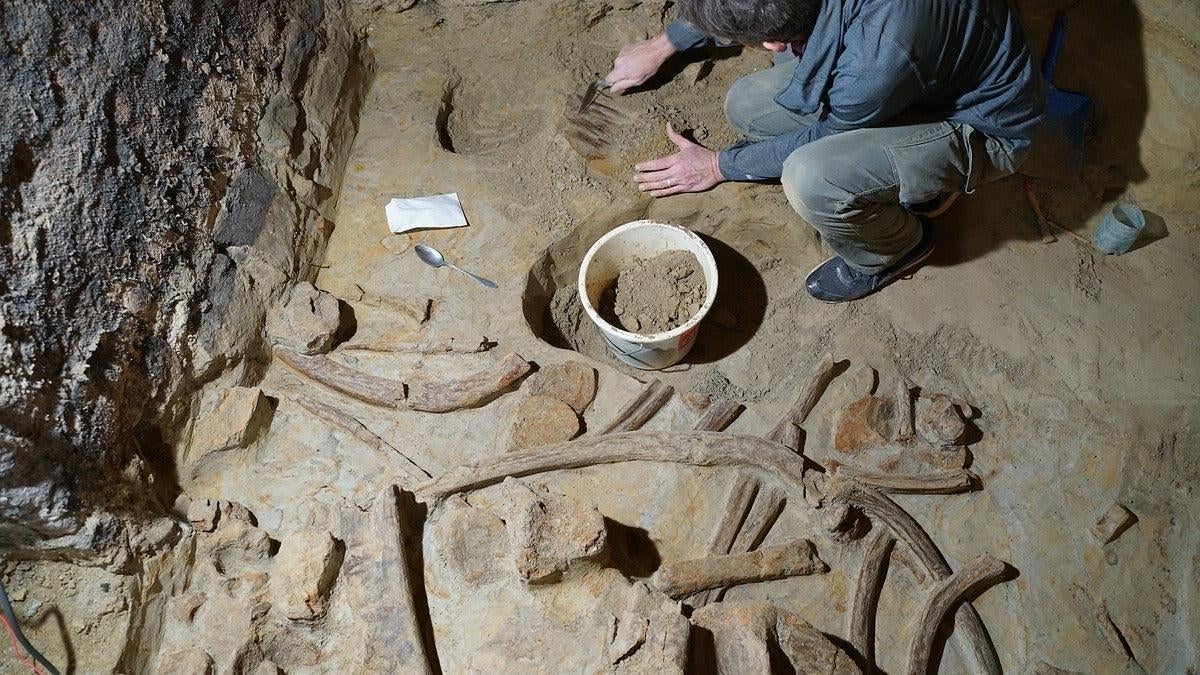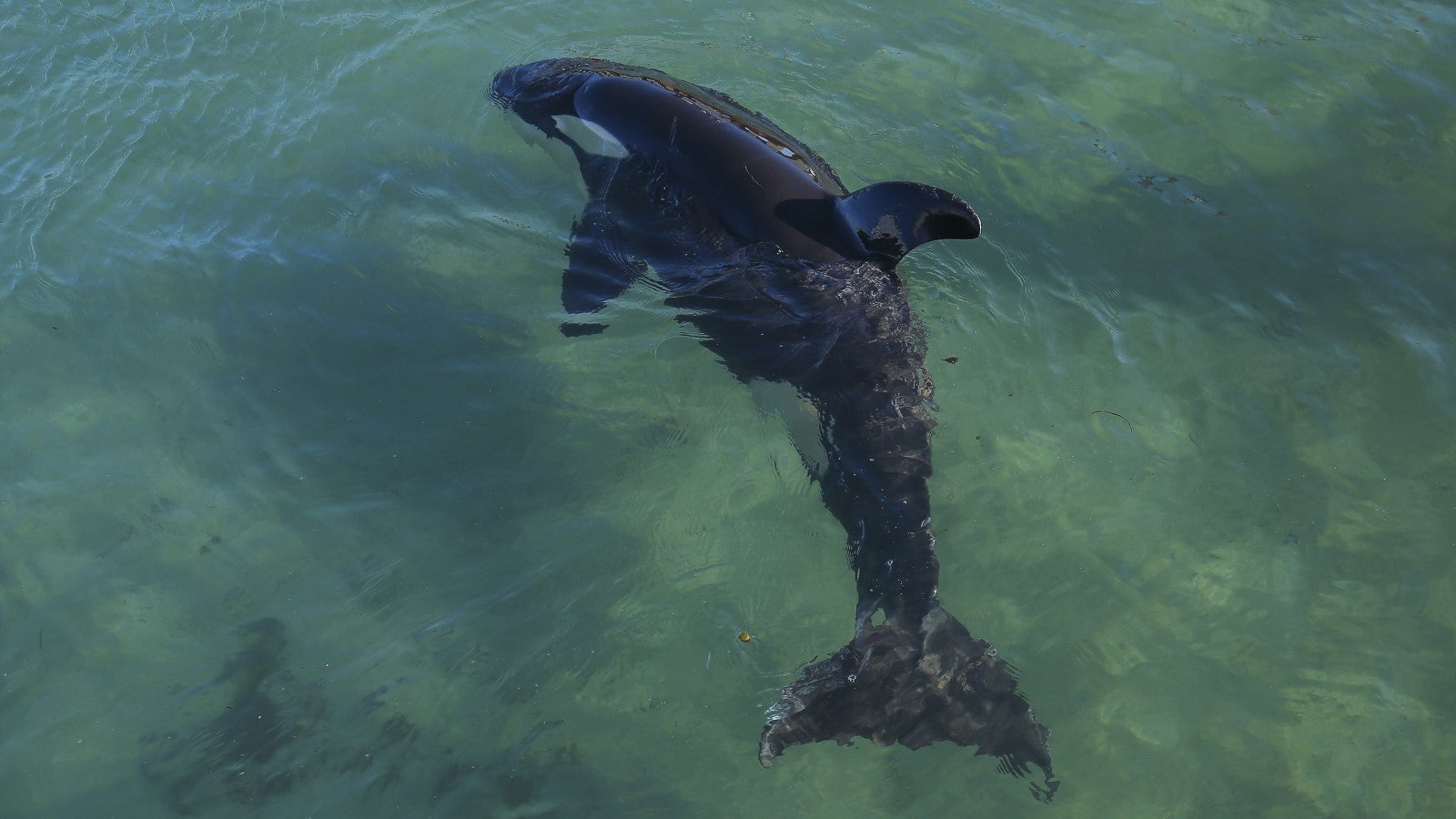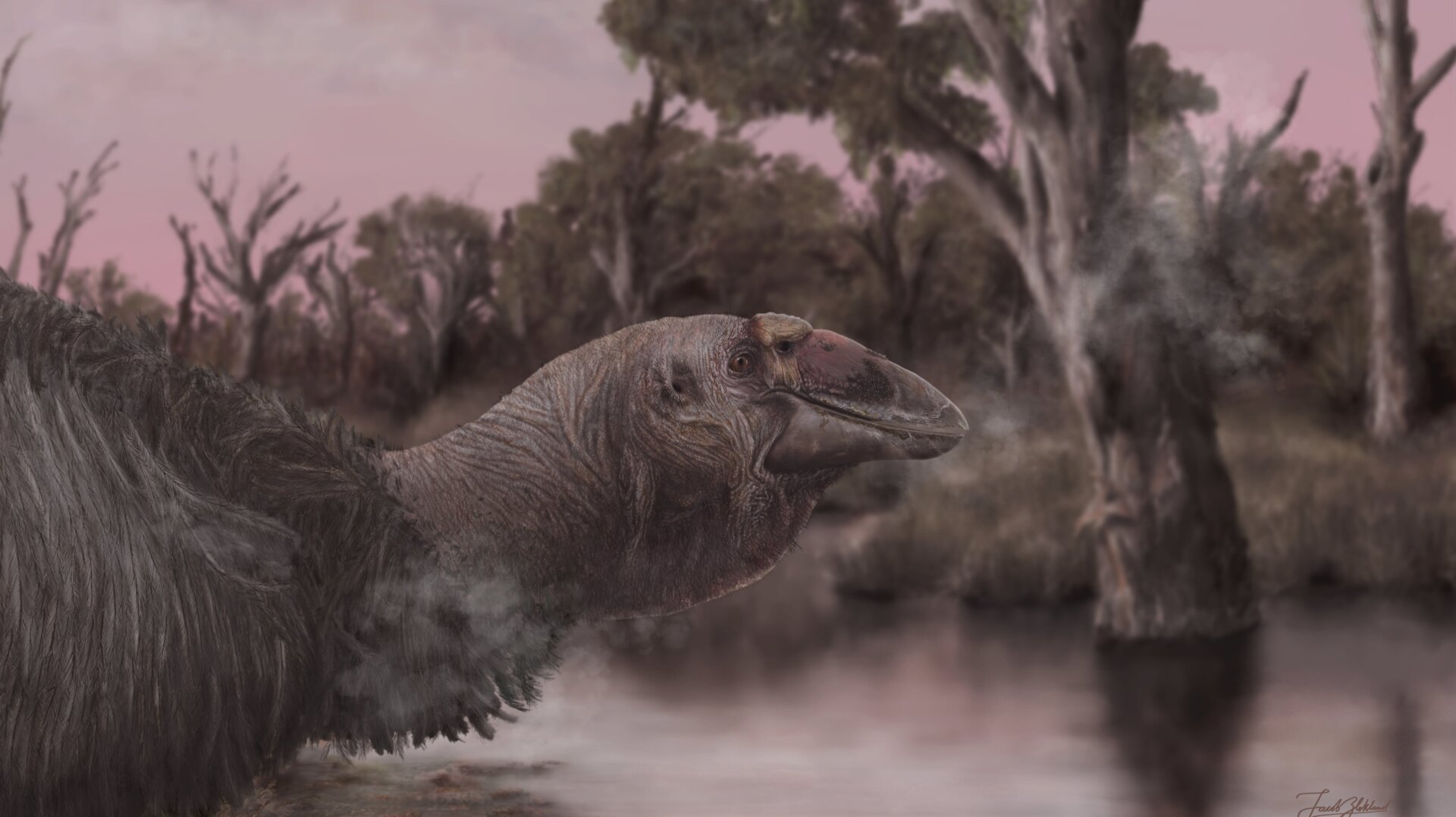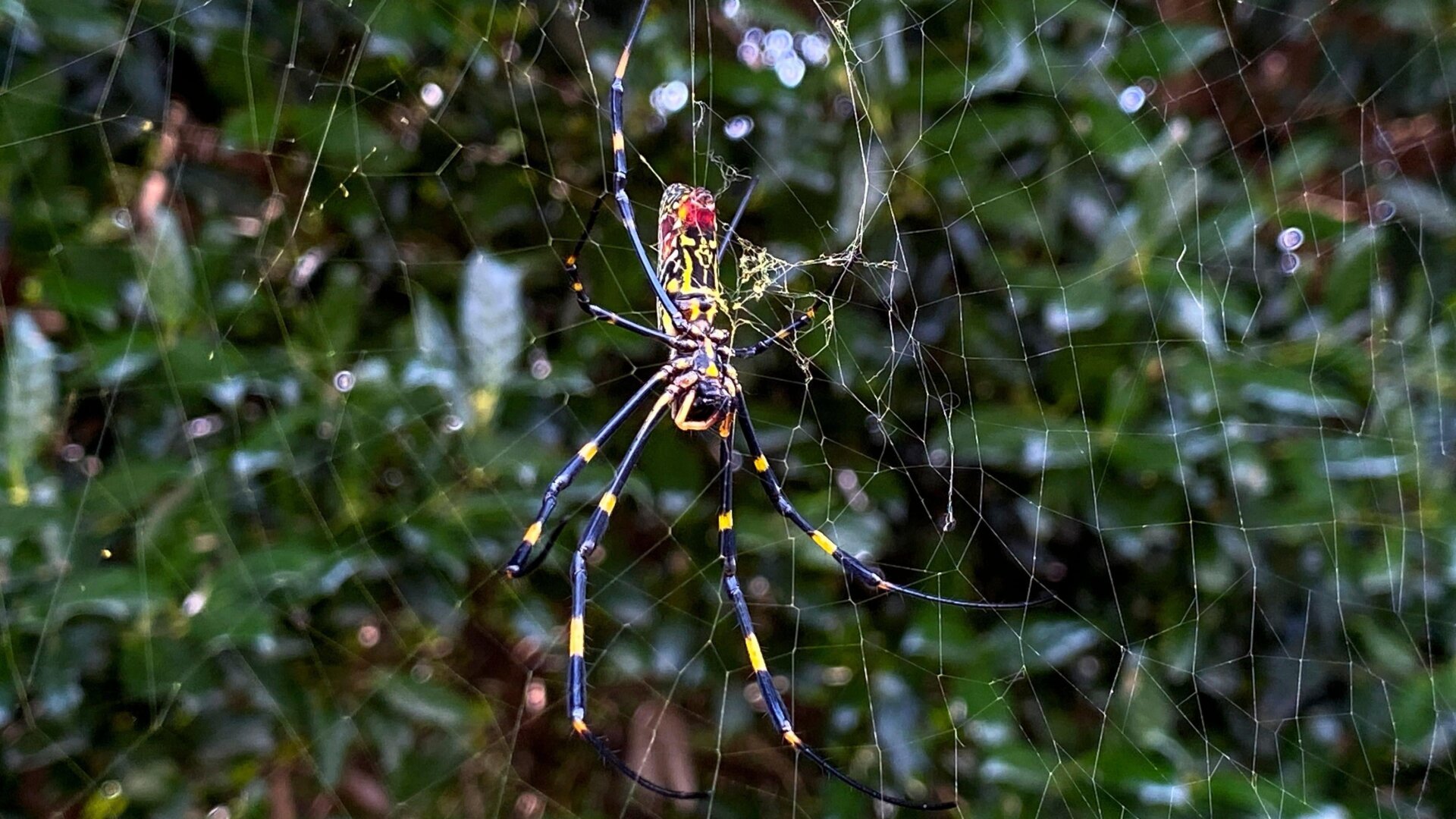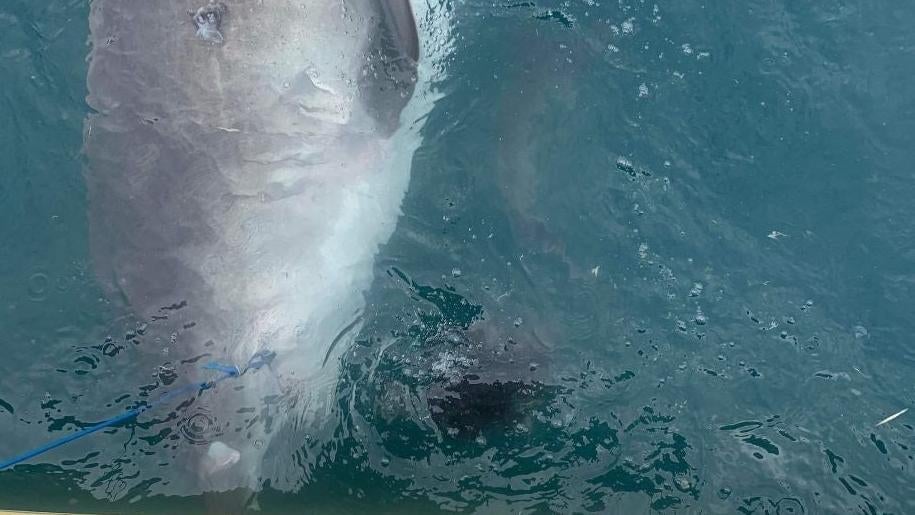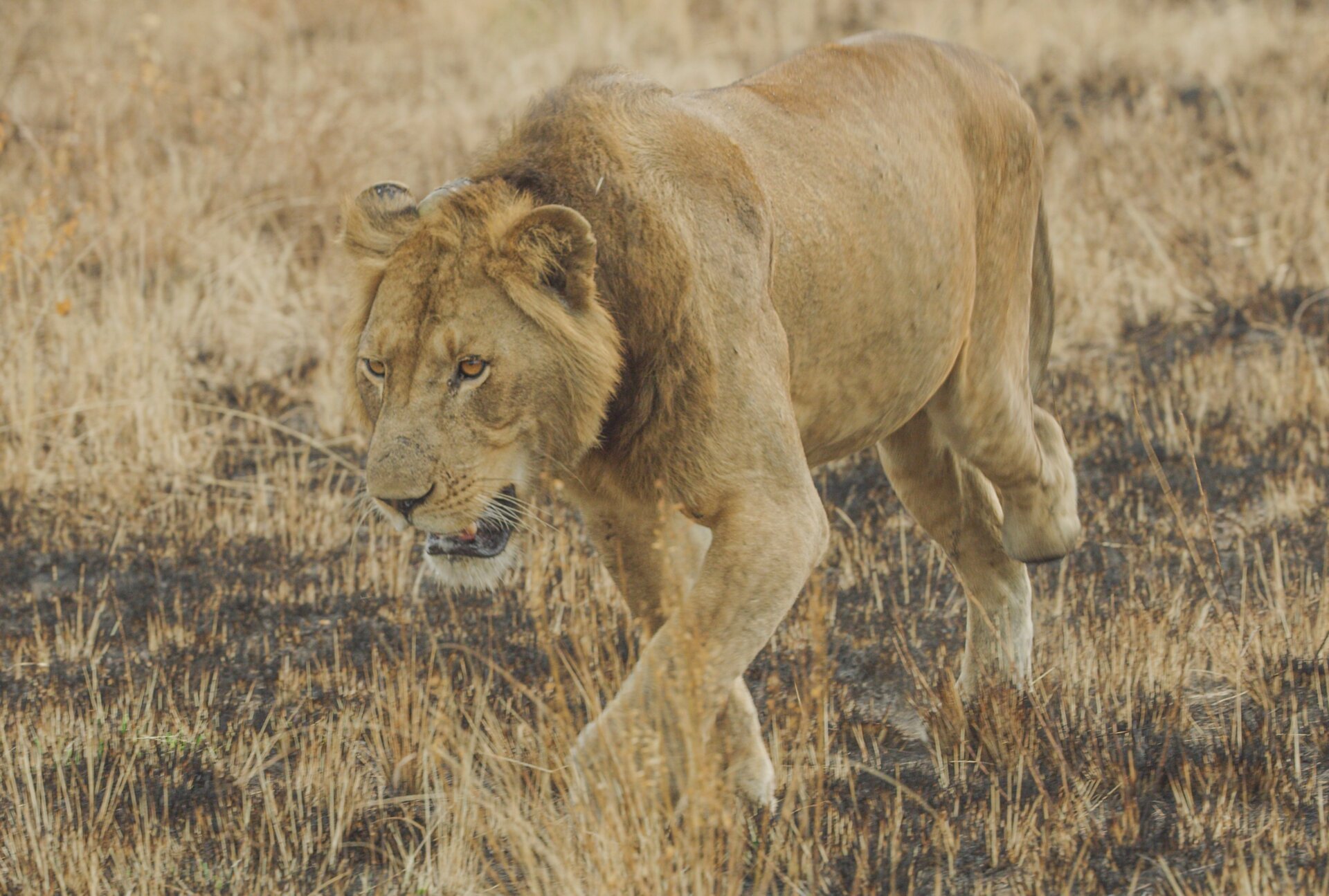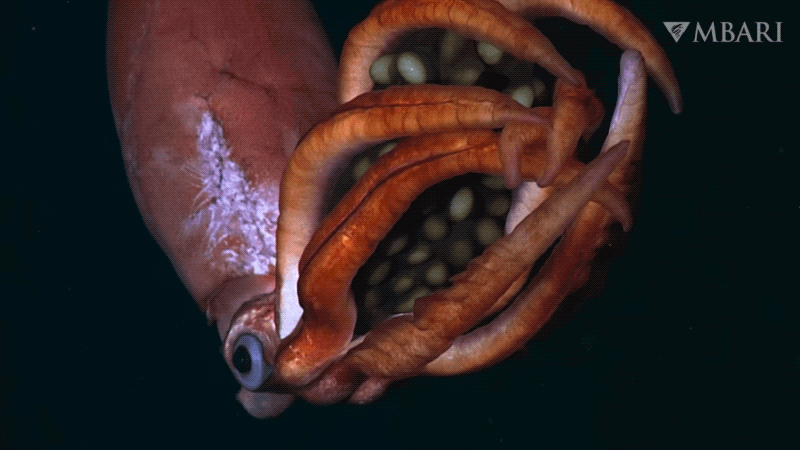A wine cellar renovation in Gobelsburg, Austria, has unearthed a remarkable collection of mammoth bones, potentially offering new insights into Upper Paleolithic hunting practices. Winemaker Andreas Pernerstorfer discovered the massive bones in March 2024 while renovating his cellar. He promptly reported the find to authorities, ultimately leading to the involvement of the Austrian Archaeological Institute of the Austrian Academy of Sciences (ÖAW).
This unexpected discovery has sparked significant interest among archaeologists and paleontologists. The bones, estimated to be between 30,000 and 40,000 years old, represent a significant find, the largest of its kind in Austria in over a century. According to the ÖAW, comparable sites in the region were excavated over a century ago, limiting the application of modern research techniques. This new discovery provides a unique opportunity to study these remains with cutting-edge technology.
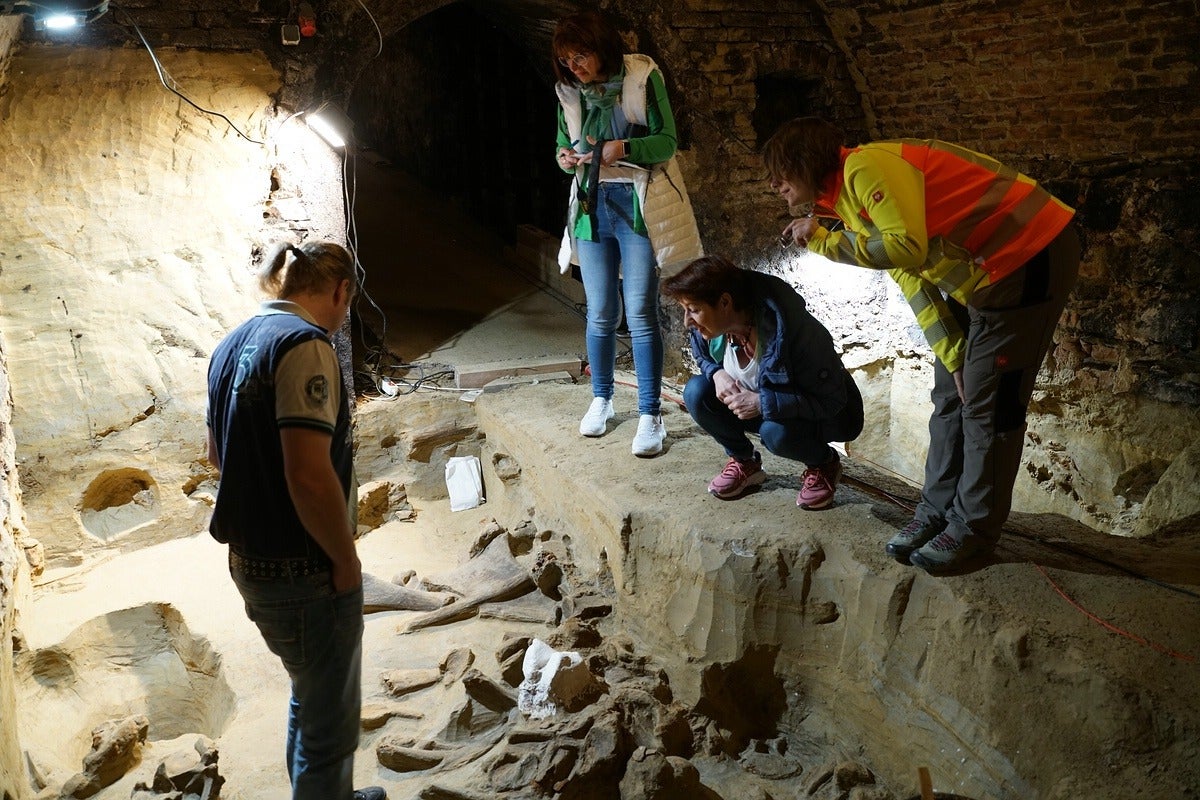 ÖAW archaeologist Hannah Parow-Souchon (right) explains the bone location to a local councillor (center) and cellar owner Andreas Pernestorfer (left).
ÖAW archaeologist Hannah Parow-Souchon (right) explains the bone location to a local councillor (center) and cellar owner Andreas Pernestorfer (left).
Since early May, a team of archaeologists, led by ÖAW archaeologist Hannah Parow-Souchon, has been meticulously excavating the site. The density of the bone layer is unprecedented in Austria, according to Parow-Souchon. This concentration of remains allows researchers to utilize modern methods like 3D mapping to document the find, providing valuable data for further analysis.
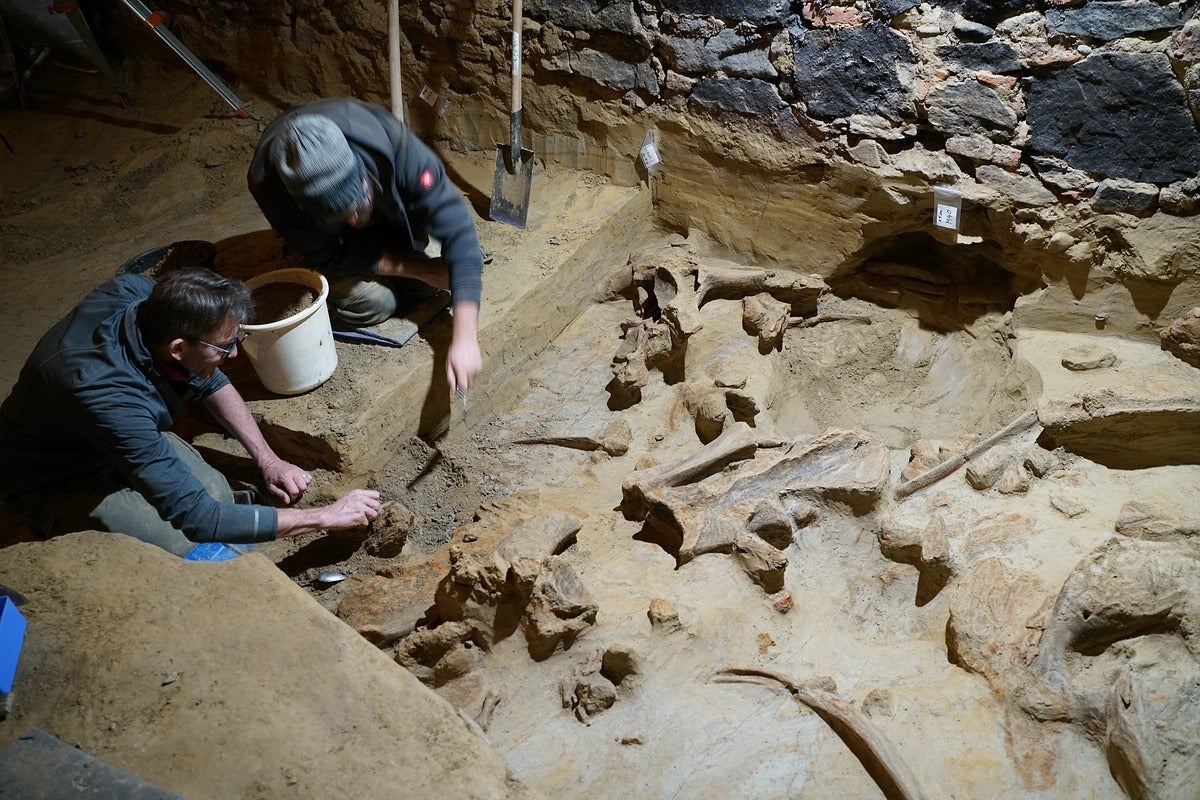 The team at work in the cellar.
The team at work in the cellar.
The discovery raises intriguing questions about Upper Paleolithic hunting strategies. While mammoths were known to be hunted, the specific methods remain largely unknown. The site could represent a natural death location or a strategically placed trap, offering valuable clues about human interaction with these massive creatures.
Remarkably, the bones belong to at least three different mammoths. This discovery resonates with a nearby site where flint artifacts, jewelry, fossils, and charcoal, dating back to the same timeframe, were unearthed 150 years ago. This suggests a possible connection between the two locations. Following the excavation, the mammoth bones will be transferred to the Natural History Museum in Vienna for restoration. Hopefully, Pernerstorfer can complete his renovations without further prehistoric interruptions and finally enjoy the fruits of his labor.



